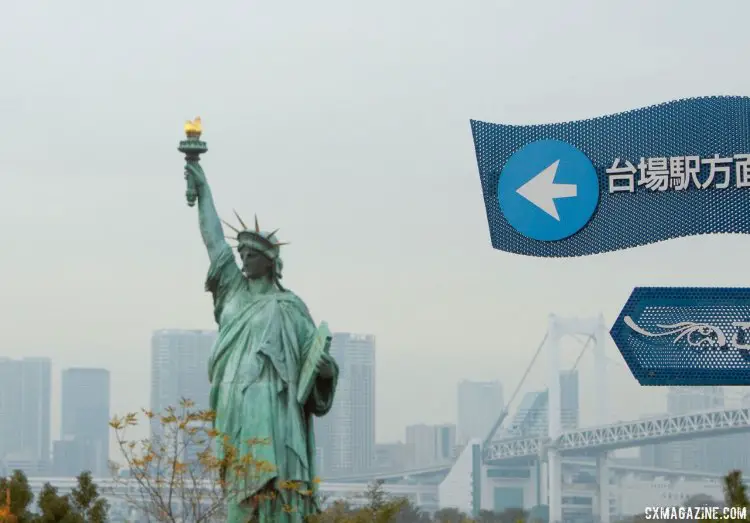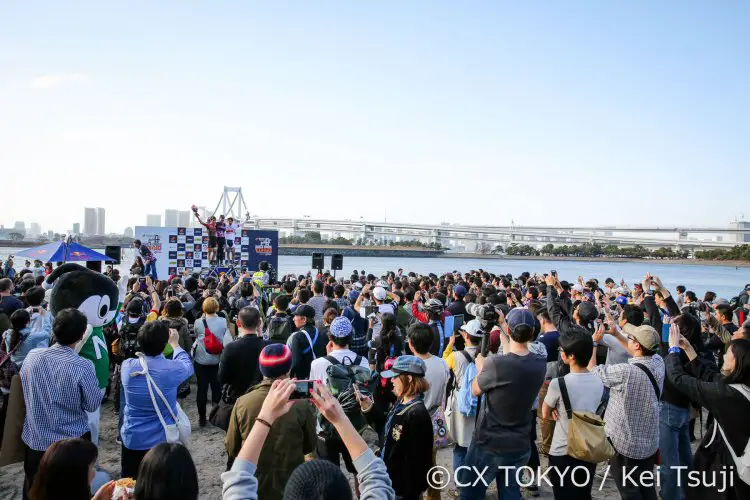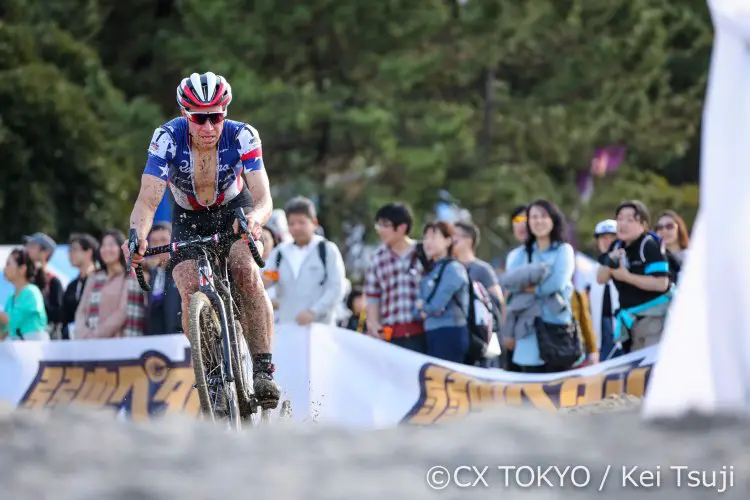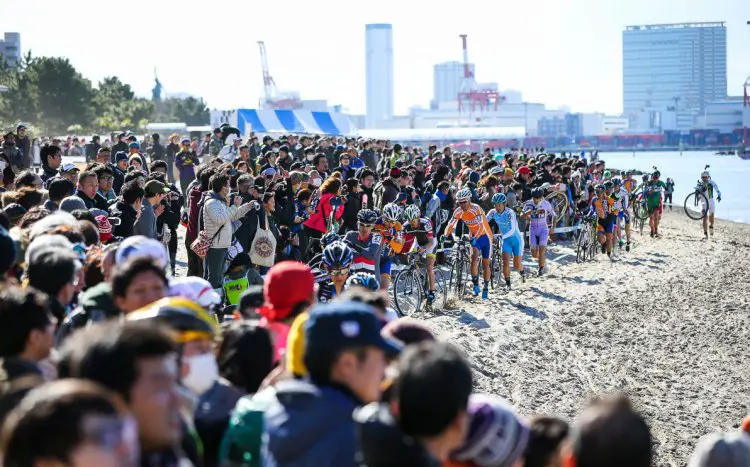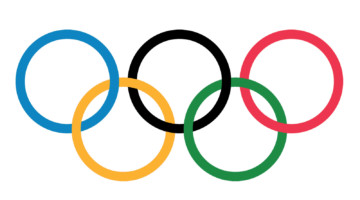This weekend, the crowds will emerge in Asia to watch top athletes compete for medals and put on a show.
It’s a rare chance to watch these racers on Asian soil, as nobody knows when the event will be back, if at all.
No, cyclocross has not been added to the Winter Olympics in South Korea. There’s still that pesky snow and ice rule.
One Last Hurrah
For the seventh year in a row, in the shadow of a miniature Statue of Liberty in Odaiba Kaihin Park, Cyclocross Tokyo will once again delight tens of thousands of fans and challenge racers with its spectacular, 1.5km-long sandy course.
On Saturday and Sunday, one of the biggest races in the World returns to the beaches of the biggest city in the world for what could be its final event.
After this weekend’s racing, the sandy Cyclocross Tokyo will be put on ice due to pending construction for the 2020 Summer Olympics. The park will be used as the start/finish for triathlon and marathon swimming in the Tokyo Summer Games.
While World Championship-size crowds are expected yet again for this year’s event, the racing on Sunday will look quite different from past years for reasons that have nothing to do with the Olympics.
The UCI Steps In
The high-profile Champion System-sponsored event typically is a season-ending stop and party for some of the top American cyclocross racers, but this year, no American professional will be making the trip. Australian and European professionals will also be missing when the gun goes off.
Why the change for 2018? Promoter Ryoji Abeki had no intention of reducing the profile of what might be his last Cyclocross Tokyo, but his event arguably fell victim to its own success.
In the past, Abeki paid for travel and accommodations for some of the U.S.’ biggest names in cyclocross. Jeremy Powers, Barry Wicks, Zach McDonald, Tim Johnson, Kerry Werner and Katie Compton among others have all made the trip. Compton recalled her 2016 trip as a memorable one, saying, “I don’t think I’ve had that much fun racing in a long time.”
Unfortunately, the UCI has alerted Abeki that top racers competing in his event is in violation of established UCI rules. Even though the governing body seemed to look the other way in the past when international racers lined up in Japan, this year the UCI decided to enforce its rules, preventing Abeki from inviting American and other international racers, including last year’s winners, Steve and Lucie Chainel.
Abeki told Cyclocross Magazine that starting “three years ago, the UCI has kept their eye on Cyclocross Tokyo.” And apparently, the governing body had seen enough.
“In June, the UCI told us that we can’t invite top 50 UCI riders for CX Tokyo, because CX Tokyo is not a UCI race.”
What is the rule in question?
Abeki cites two UCI rules:
UCI Rule 1.2.006:
The organiser of, cyclo-cross, mountain bike or BMX event registered on a national calendar in which riders of three or more foreign federations participated, two foreign federations for a track, trials or an indoor cycling event, must request the inclusion of the next edition of his event on the international calendar. The event shall not be included in the national calendar, except if its inclusion in the international calendar is rejected.
UCI Rule 5.1.002:
A rider ranked in the top 50 of the UCI cyclo-cross classification may not take part in national events in a country other than the federation of his nationality according to the UCI regulations.
The UCI gave Abeki two choices: Become a UCI race, or stop inviting top racers. Abeki chose the latter partly due to logistics, but also finances. “The venue is too small and we can’t make [a course] over 2.5km,” Abeki explained. “We also don’t have enough budget to become a UCI race. We have a problem with [running a] deficit for seven years. This is our dream of making pro CX scene in Japan, but we can’t spend more money.”
“In June, the UCI told us that we can’t invite top 50 UCI riders for CX Tokyo, because CX Tokyo is not a UCI race.” -Ryoji Abeki, CX Tokyo promoter
Last year, the event drew 20,000 fans over two days, and this year Abeki expects even more fans to come watch the final event of the AJOCC (Japan Cyclocross Organizer Association) 12-race JCX cyclocross series, albeit with a field that will be a bit more homogenous. This year, the men’s race will feature most of the top 35 Elite Men from the JCX series along with 32 of the country’s top Elite Women.
Abeki does not know if the event will return in 2021 after the Olympics, but is hopeful he’ll find a way to bring it back. Stay tuned.













